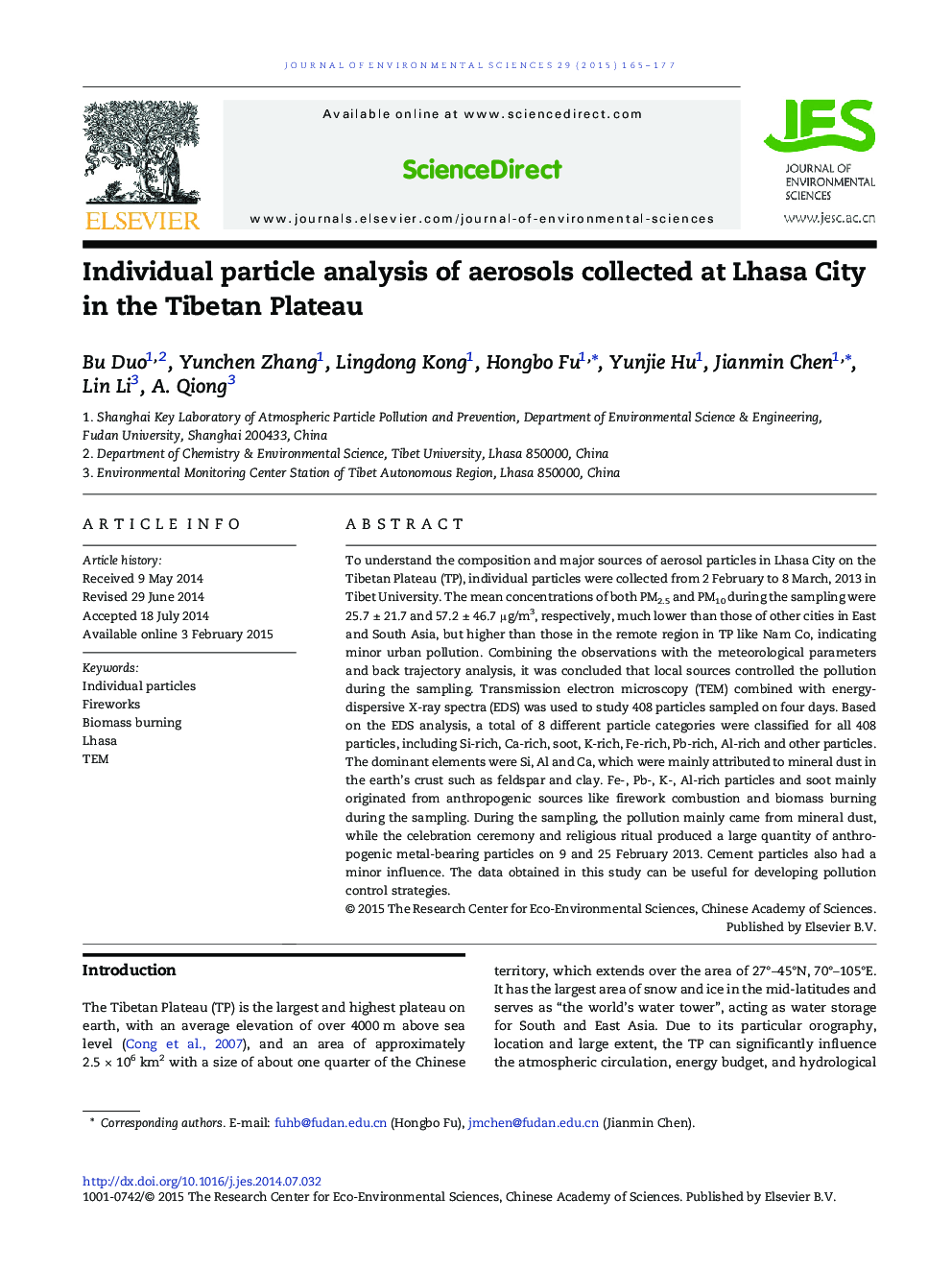| Article ID | Journal | Published Year | Pages | File Type |
|---|---|---|---|---|
| 4454222 | Journal of Environmental Sciences | 2015 | 13 Pages |
To understand the composition and major sources of aerosol particles in Lhasa City on the Tibetan Plateau (TP), individual particles were collected from 2 February to 8 March, 2013 in Tibet University. The mean concentrations of both PM2.5 and PM10 during the sampling were 25.7 ± 21.7 and 57.2 ± 46.7 μg/m3, respectively, much lower than those of other cities in East and South Asia, but higher than those in the remote region in TP like Nam Co, indicating minor urban pollution. Combining the observations with the meteorological parameters and back trajectory analysis, it was concluded that local sources controlled the pollution during the sampling. Transmission electron microscopy (TEM) combined with energy-dispersive X-ray spectra (EDS) was used to study 408 particles sampled on four days. Based on the EDS analysis, a total of 8 different particle categories were classified for all 408 particles, including Si-rich, Ca-rich, soot, K-rich, Fe-rich, Pb-rich, Al-rich and other particles. The dominant elements were Si, Al and Ca, which were mainly attributed to mineral dust in the earth's crust such as feldspar and clay. Fe-, Pb-, K-, Al-rich particles and soot mainly originated from anthropogenic sources like firework combustion and biomass burning during the sampling. During the sampling, the pollution mainly came from mineral dust, while the celebration ceremony and religious ritual produced a large quantity of anthropogenic metal-bearing particles on 9 and 25 February 2013. Cement particles also had a minor influence. The data obtained in this study can be useful for developing pollution control strategies.
Graphical abstractAnalysis of individual particle of aerosols collected in the urban of Lhasa from February 2 to March 8, 2013 shows dominant mineral dust pollution with some Pb-, Al-, K- and Fe-rich particle pollution due to the firework/firecracker combustion and biomass burning on celebration ceremony and religion ritual.Figure optionsDownload full-size imageDownload as PowerPoint slide
